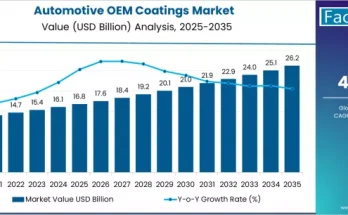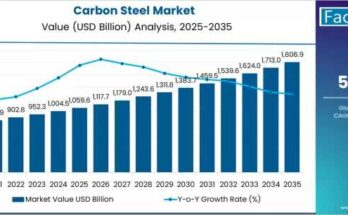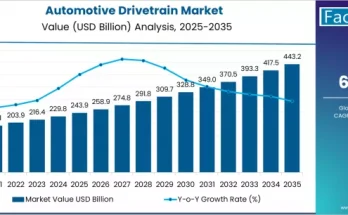As the global demand for more versatile and energy-efficient aerial solutions grows, hybrid drones are emerging as a transformative force in the unmanned aerial vehicle (UAV) industry. Combining the advantages of electric and fuel-powered propulsion, hybrid drones offer extended flight times, higher payload capacity, and operational resilience in complex environments. The hybrid drone market is poised for significant expansion, driven by technological innovations and the increasing need for reliable drone performance across both commercial and defense sectors.
Hybrid drones are not merely an evolution of UAV technology—they represent a strategic shift toward long-endurance, multipurpose aerial platforms. This shift is fueling investments in drone research and policy development, underscoring the growing importance of hybrid drones in a wide array of industrial applications.
Market Overview
The hybrid drone market refers to the segment of UAVs that utilize a combination of power sources—typically combustion engines and electric batteries—to optimize flight efficiency. This hybrid propulsion system allows for longer operational periods and the ability to perform demanding tasks that exceed the capabilities of fully electric drones.
The growing appeal of hybrid drones stems from their ability to operate in environments where electric drones fall short due to power limitations. These drones are increasingly adopted for activities requiring extended flight durations, rapid deployment, and robust performance, such as large-area surveillance, infrastructure monitoring, precision agriculture, and military reconnaissance.
Additionally, the hybrid design enables drones to carry heavier payloads, making them ideal for transporting goods, mounting sophisticated sensors, or executing complex missions in remote or inaccessible locations.
Regional Insights
North America
North America is a leading region in hybrid drone development and deployment, primarily due to strong technological infrastructure and robust investment in aerospace innovation. Government agencies and private firms in the region are actively pursuing hybrid drone capabilities for both civil and defense purposes.
Strategic collaborations between research institutions and drone manufacturers are enabling rapid advancements in hybrid drone propulsion, navigation systems, and AI-enabled analytics. Moreover, regulatory frameworks in countries such as the United States are gradually evolving to support the integration of hybrid UAVs into national airspace, facilitating their adoption across diverse sectors.
Europe
Europe follows closely behind, benefiting from comprehensive drone regulations and a strong focus on sustainable aviation. Several European countries are investing in hybrid drone programs to enhance border security, environmental monitoring, and smart logistics networks.
The European Union’s emphasis on green technology has also led to increased interest in hybrid drones as a transitional solution toward fully electric aviation. As a result, European manufacturers are innovating lightweight materials and energy-efficient propulsion systems to meet both commercial demands and environmental goals.
Asia-Pacific
Asia-Pacific is rapidly emerging as a high-growth region for hybrid drones, driven by expanding defense budgets, growing e-commerce activity, and the digitization of agricultural practices. Countries like China, Japan, South Korea, and India are leveraging hybrid drone technologies for urban planning, traffic monitoring, disaster management, and agricultural automation.
Additionally, the region’s dense population and diverse geography make hybrid drones an attractive option for overcoming logistical and infrastructural challenges, particularly in rural or hard-to-reach areas.
Key Trends & Forecast
- Rise in Long-Endurance Missions
One of the defining trends in the hybrid drone market is the focus on extended flight time. Hybrid propulsion allows for longer missions, making drones more suitable for tasks like mapping large areas, coastal patrol, and pipeline inspection. This trend is expected to accelerate with the continued development of lightweight engines and advanced battery technologies.
- Integration of AI and Machine Learning
AI integration is transforming hybrid drones into intelligent aerial platforms. From real-time object detection and tracking to autonomous navigation and predictive maintenance, AI is enhancing operational efficiency. Machine learning algorithms are also being used to optimize fuel usage and battery management, increasing the reliability of hybrid systems.
- Multi-Domain Applications
Hybrid drones are gaining traction in multi-domain operations, where air, land, and sea-based platforms must coordinate complex missions. Defense agencies, in particular, are investing in hybrid drones for battlefield surveillance, target acquisition, and communication relay in contested environments.
- Emergence of VTOL Capabilities
Vertical Take-Off and Landing (VTOL) functionality is increasingly integrated into hybrid drone designs. VTOL hybrid drones combine the versatility of helicopters with the efficiency of fixed-wing aircraft, making them suitable for confined launch environments and long-range missions.
- Regulatory Developments and Airspace Integration
Governments around the world are formulating new policies to integrate hybrid UAVs into controlled airspace. These developments are crucial for scaling commercial drone applications, particularly in logistics and transportation. Improved regulatory clarity is expected to attract more investment and accelerate innovation.
Applications & End-Use Outlook
- Defense and Security
Hybrid drones offer strategic advantages in defense operations, including persistent surveillance, intelligence gathering, and communication support. Their extended range and payload capabilities make them ideal for patrolling borders, monitoring enemy activity, and delivering mission-critical supplies to troops in the field.
- Agriculture
In agriculture, hybrid drones are revolutionizing precision farming. They are used for crop monitoring, pesticide spraying, and soil analysis across large tracts of farmland. The long flight times and high payload capacity of hybrid drones enable efficient coverage and data collection, contributing to improved yield and resource management.
- Infrastructure and Construction
Hybrid drones are increasingly employed in infrastructure inspection, construction monitoring, and asset management. Their ability to carry advanced sensors and imaging equipment allows for detailed mapping and real-time progress tracking. This helps identify structural issues, enhance safety protocols, and streamline project timelines.
- Energy and Utilities
Energy companies use hybrid drones for inspecting power lines, wind turbines, and solar farms. These drones can fly long distances in remote areas, capturing high-resolution images and thermal data that help prevent equipment failure and reduce downtime.
- Logistics and Delivery
The hybrid drone’s ability to carry heavier loads over longer distances is opening new possibilities in logistics. Companies are exploring hybrid drones for last-mile delivery in rural areas, medical supply transportation during emergencies, and rapid response services in natural disasters.
- Environmental Monitoring
Hybrid drones play a vital role in environmental protection initiatives. They are used to monitor wildlife, assess deforestation, track air and water quality, and support disaster response efforts. Their ability to operate in remote areas with limited charging infrastructure makes them ideal for long-range environmental studies.
Challenges and Opportunities
Despite their advantages, hybrid drones face several challenges:
- Technical Complexity: Designing a reliable hybrid propulsion system that integrates seamlessly is technically demanding.
- Cost Constraints: Hybrid drones are more expensive than standard electric models, which can be a barrier for smaller businesses.
- Regulatory Hurdles: Varying drone regulations across countries hinder the standardization and scaling of hybrid drone operations.
However, these challenges are also fueling innovation and investment. Startups and established players alike are focusing on cost reduction, modular designs, and compliance solutions to expand market accessibility. The growing recognition of hybrid drones as strategic assets in public and private sectors presents significant growth opportunities.
Competitive Landscape
The hybrid drone market is highly dynamic, with numerous players striving for innovation leadership. Companies are focusing on R&D collaborations, strategic acquisitions, and product launches to enhance their portfolios.
Key players in the market are investing in proprietary propulsion systems, AI-based flight controllers, and payload integration to deliver high-performance solutions. Partnerships with defense agencies, logistics firms, and agricultural cooperatives are also being pursued to align product development with sector-specific needs.
Open innovation ecosystems—where startups, academia, and manufacturers collaborate—are gaining prominence, accelerating the pace of technological advancement and commercial deployment.
Conclusion
The hybrid drone market stands at the intersection of innovation, efficiency, and mission-critical utility. By combining the strengths of electric and fuel-powered systems, hybrid drones address key limitations of traditional UAVs and unlock new possibilities in aerial operations.
From defense to agriculture, logistics to environmental conservation, hybrid drones are redefining the boundaries of what is possible in the sky. As technology matures and regulatory frameworks evolve, hybrid drones are set to become indispensable tools across industries.
Organizations seeking to stay ahead in this rapidly evolving space must invest in understanding hybrid drone capabilities, regulatory trends, and application-specific requirements. With the right strategy, hybrid drones can become a powerful enabler of operational excellence and sustainable growth in the years to come.



